Coaching Conversations: The State of College Swimming in a Rapidly Changing Landscape
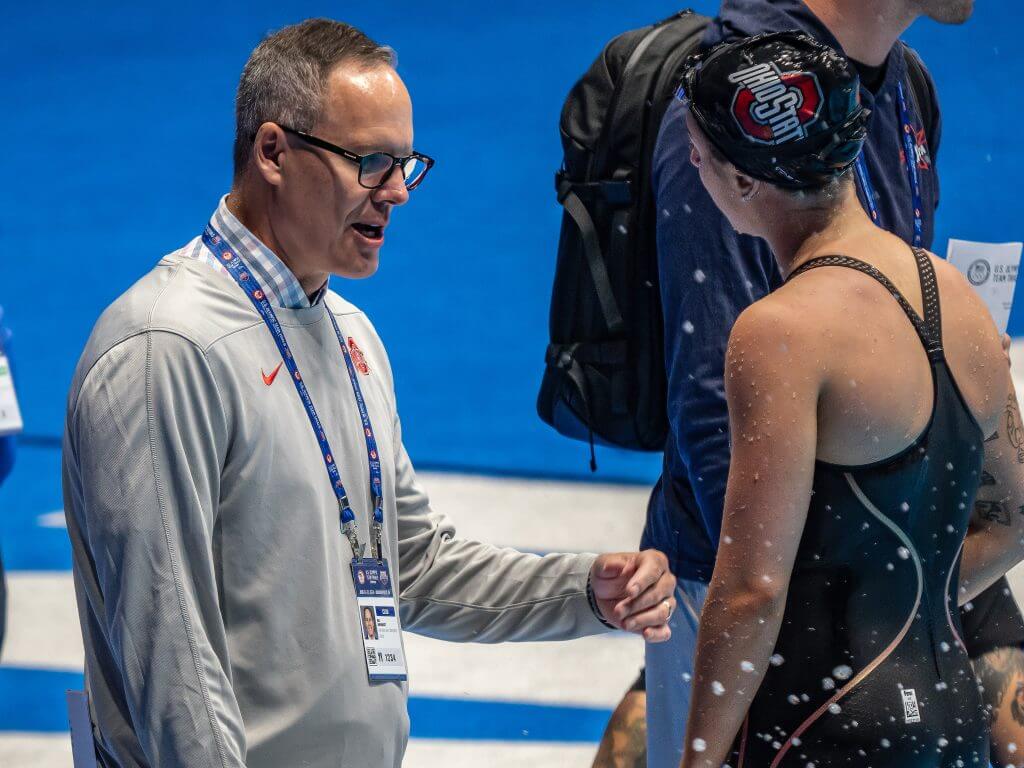
Coaching Conversations: The State of College Swimming in a Rapidly Changing Landscape
By Michael Stott
It used to be death and taxes were the only certainties – and rarely were national politics and college swimming packaged together. Welcome to the new world order with uncertainties surrounding the House decision, payment of athletes, NIL, roster restrictions, transfer portal, recruiting implications and much, much more.
“It’s not a perfect landscape out in front of us,” says former Georgia coach Jack Bauerle. “Some of it is disconcerting. All of this is so fast and furious. We were always used to a slower moving train when the college coaches association got together to talk about a window of time for recruiting, starting times for NCAA championships and so on. All of a sudden it’s a windstorm… no, a hailstorm.”
To Review
As a refresher, the case was brought in 2020 by former Arizona State swimmer Grant House and TCU/Oregon basketball player Sedona Prince, who sued the NCAA for barring name, image and likeness (NIL) payments for athletes prior to 2021, when the NCAA changed its rules to allow NIL. The plaintiffs alleged that the NCAA’s rules prohibiting payment was a violation of the Sherman Act and they deserved compensation.
On May 23, 2024, the NCAA reached a settlement of the case. The resulting action allows D-I college athletes to receive pay directly from their universities and agrees to back-pay damages to former Division I athletes who were unable to profit on their NIL rights. Also proposed is a revenue sharing model between schools and athletes. The settlement received preliminary approval October 6 by U.S. District Court Judge Claudia Wilken. The final approval hearing is set for April 7, 2025.
Under the $2.78 billion settlement (back pay to former college athletes), the NCAA would be responsible for roughly $1.2 billion from reserves. Power Five conferences would be responsible for about 24 percent in withheld future revenues. Every collegiate athlete who competed between 2016 and 2021 will have the opportunity to opt into the revenue share.
As House v. the NCAA inexorably winds toward a resolution — or an eon of litigation — the current landscape resembles World War I’s Western Front with coaches, college administrators, current swimmers, future recruits (and their parents) left to navigate unsettled terrain.
Short of getting all the stakeholders in the same room, Swimming World polled a number of aquatic thought leaders for their opinions on the current state of affairs. Not surprisingly, all coaches we approached did not respond, generally for one of three reasons: they didn’t know the answer, didn’t want to go on the record or were counseled by administrators not to comment.
Below are some candid thoughts and opinions from respected voices with decades of college coaching experience who did go on the record. At the moment they admit nothing is set in stone, but their views give some inkling of where college swimming is headed.
Forging Ahead
Samantha Barany, Executive Director, CSCAA
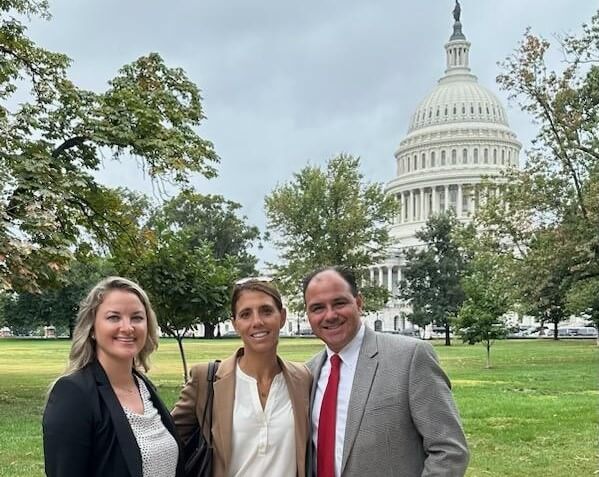
Photo Courtesy: Samantha Barany
The proposed House settlement, which was preliminarily approved this week, introduces the concept of roster caps, with the NCAA and Power Five commissioners agreeing to a limit of 30 men and 30 women in swimming and diving. It should not be assumed that all teams would have teams of 30. Instead, coaches will need to manage rosters, no larger than 30, to align with their institution’s financial constraints or Title IX goals. This is already impacting how coaches recruit. Some team rosters may remain unchanged, others could be trimmed and athletes might enter the transfer portal or see their teams shift to club status.
Coaches and presidents are now facing incredibly difficult decisions. Should swimming and diving programs persist, the landscape for coaches and their teams will shift dramatically—reshaped by revenue sharing, NIL, roster caps and conference realignments. The consequences will be significant.
NCAA Bylaw 20.9.6 mandates that Division I institutions sponsor a minimum of 16 or 14 sports to support broad-based athletic opportunities, including swimming and diving. If this bylaw is modified or the minimum number is reduced, we can expect programs to be cut as a cost-saving measure, with funds redirected to revenue sharing or NIL obligations arising from the House settlement.
I don’t think any Athletic Director or President enters this field with the intention of cutting opportunities. However, in the end, their performance is often judged by the success of their football or basketball programs, and they are tasked with making the financials add up.
If schools adopt the terms of the House settlement, revenue sharing will become a reality. Currently, football and basketball generate the income that subsidizes Olympic sports, but if this revenue is redirected to the athletes themselves, institutions will be forced to find new ways to balance their budgets. We are hearing stories of donor fatigue setting in, and the possibility of athletic departments and conferences turning to private equity is becoming more likely.
This is undoubtedly a challenging moment. The NCAA and its member institutions are now asking Congress for an antitrust exemption to prevent athletes from being classified as employees. The CSCAA supports and advocates for this. So far, no coach or athlete we’ve encountered believes athletes should be treated as employees.
The CSCAA’s position is clear: athletes should not be classified as employees. Doing so would have detrimental effects on college athletics across all three divisions. Only Congress has the power to resolve this issue, but if they are going to offer protection to the NCAA and its member institutions, it should be contingent on preserving Bylaw 20. This would be a small but critical step in ensuring Olympic sports remain on college campuses, helping to maintain the grassroots support necessary for our Olympic movement to thrive.
Bill Dorenkott, head coach Ohio State, president ASCA
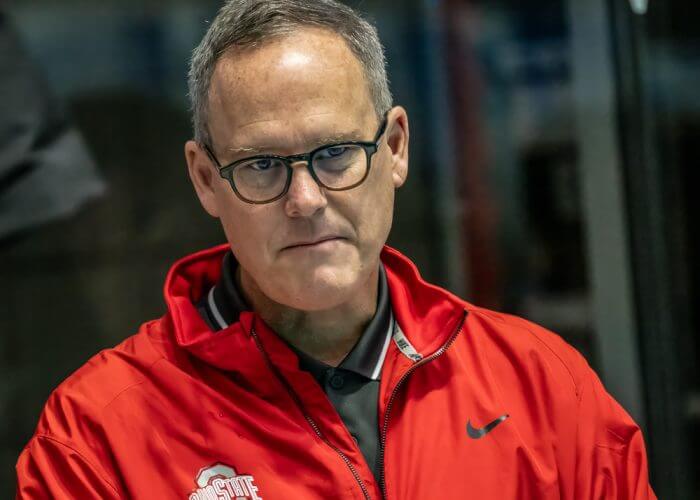
bill-dorenkott-
In five years college swimming will look somewhat the same with that time indicating who are the haves and have nots. In other words, those who can afford to operate at a high level and those who cannot. I did not get into coaching to take opportunities away. The fact that we are taking opportunities away really hurts my heart. The truth is I am going to have to cut some on my team who are great kids.
Swimming is not just about fast times, but a sport about developing transferable skills for when swimming is over. We are moving toward a way to be a little more elitist and that doesn’t jibe well with me.
Right now revenue sharing (money back to athletes) is expected to be $23 million annually. If that number goes up you will see fewer opportunities for Olympic sports. If things stay as discussed Ohio State will not offer scholarships in six sports. OSU has made a decision to offer broad-based programming. Football and basketball will be prioritized as a function of revenue sharing. They are the sports that generate the most revenue.
Our annual athletic budget for 36 sports is $290+. The $23 million comes from the $290 million. Schools with smaller budgets, say one with $100-125, are in trouble if they can’t afford to take 15-20 percent to pay that revenue. They have to do that to pay revenue to stay competitive in football and basketball, which means they have to cut somewhere else.
Most athletic directors don’t have an appetite to cut sports for two reasons:
- Title IX implications
- A lot of AD’s and presidents lost their jobs during COVID because of the outcry.
So what you will see is a lot of campuses with teams that look more like club sports than varsity. They will be effected by scholarships offered, coaches salaries, travel expenses and everything else that makes up the budget.
Perhaps some schools can afford to have 30 swimmers per gender on full rides. If so, you’ll likely have some schools with have and have not sports on the same campus. Every dime you give to one program means one dime less for another.
Consider this: 82 percent of all American athletes in Paris came through the collegiate ranks. It is a great model for developing future Olympians. In the future a lot of opportunities will be gone. OSU’s total athletic community will go from 900 to 700. At other D-I schools it will be between 600-700 athletes across all sports. The number of opportunities being impacted at the Division I level in all sports across the country will be between 6,000 to 7,000 fewer roster spots. Those caught in the fallout will want to continue doing what they love to do. Where do they go? – mid-major, D-II, D-III, club?
Does all this affect recruiting timetables? Yes and no. With roster limits now set coaches will have to stay the course or pivot up or down and make adjustments regarding the present team, future teams or both considering team depth chart and needs.
NIL? I think it will change and come in house. It will be managed by universities instead of collectives outside the universities. I think the pay will be vetted by third parties and athletes will be paid by the market rate for the work they are actually doing versus just the talent they have. The programs that are thriving right now are the ones where coaches are going out and soliciting extra dollars to augment recruiting.
Transfer portal. I think it is going to blow up this spring. There are a lot of people in the transfer portal because they are on teams with rosters larger than 30 and they don’t have a spot. OR… because the team they are they on is recruiting better athletes to replace them. In recent weeks I have received calls from mid major coaches asking if I was going to release any of my athletes because of the upcoming changes.
I’ve been coaching for 34 years. When you’ve got the portal you have a 50-50 chance someone will work out. Going there you have to be very judicious and do due diligence to determine if they’ll be a good fit for your program and the university. We haven’t used it a lot but are always looking to make our team better. When we go to the portal we:
- Ask can they compete at the D-I level
- Look at the human quality (good student, good academics, good family, compelling reason for transferring)
- Are they a good fit with our current team and culture
Long term these seismic changes may offer three positives
- We can be more purposeful in recruiting
- Budgets may go farther because of smaller rosters
- We can provide greater one-on-one attention to athletes
A clear negative is fewer athlete opportunities.
This fall we are sharing what we know about the changing landscape with recruits. On their other visits they report the conversation is being avoided. We feel the more clarity we can provide the better positioned young people and their families will be when making decisions.
Jack Bauerle, 43 years at the University of Georgia
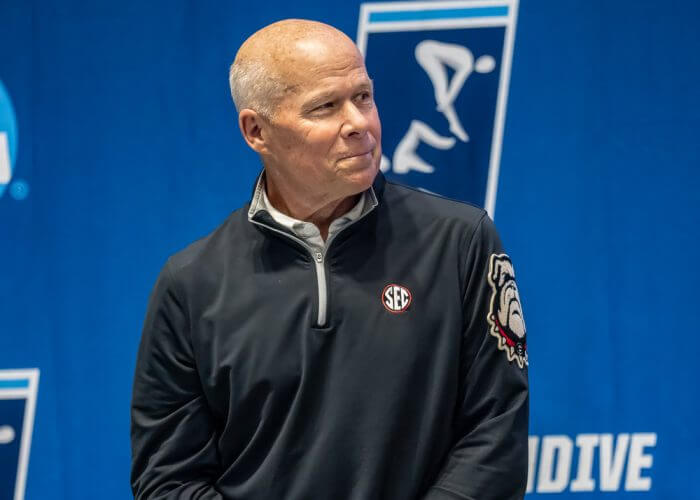
Photo Courtesy: Peter H. Bick
On NIL there’s always been a trickledown effect from football, basketball, baseball. Ultimately it trickles down to us. We like to think our kids are exempt from doing things for the wrong reasons… meaning money. That’s a hard thing when a certain amount of money sounds probably much more than it really is. The decision where to go to school should be based on one’s aspirations, academic and athletic fit and best chance for success, not money.
I had a conversation with our athletic director. We are fully committed to whatever changes take place financially. I don’t worry about schools like Georgia, other SEC schools and even conferences in the same boat. I do worry about others we compete against, conferences that stretch across the country and the associated costs.
Right now the landscape is a little nebulous, very scary and of absolute concern. I’ve always been an optimist. I like to think we have a sport that will last forever, but with the way things are going it is almost impossible for me or anyone to say “OK, this is the way it is going to be in 10 years.” Look what’s happened in three years. It is not going to be the same – nor is the money required.
Another thing, the transfer portal will have an effect on athlete donor giving. Allegiances change yearly. Those who leave will not be as connected because of the portal. We’re looking at kids with three schools in four years. Are they going to give money to each school? No. Will they pick one, maybe not.
My AD says he feels very secure for schools with money for the next five to eight years. He is not as confident for those who don’t. The only thing you ever want as a coach is a level playing field and it is not level when one school has 11 scholarships and another has 25. Whatever it is going to be in five years is going to be different – and five years after that way different.
Eddie Reese, retired coach, 15x NCAA champion, University of Texas
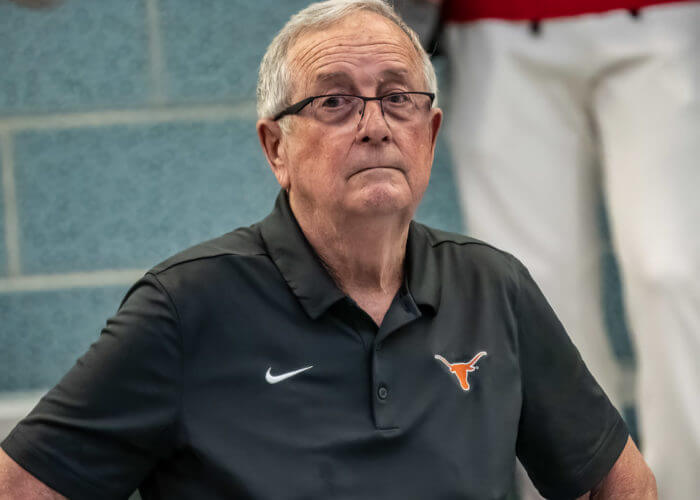
Photo Courtesy: Peter H. Bick
Charles Barkley and I agree that there will be 30-40 teams competing in a number of sports in five years. It will be the worst thing for all of us … the Olympics… All that sucks.
NIL is going to set 20 to 30 schools ahead and I can see other schools giving up, dropping sports, not just swimming, and giving scholarships to a lot of people for whom it is the only way they go to school. I know there is one school in the SEC that would like to go to 10 sports and swimming is not one of them. One college administrator has said we have to rein in NIL. Well, they may not be able to get the genie all the way back in the bottle, maybe just part of him. And then we may survive. In any case, it is way above my pay grade.
Roster limits. They’ll be cuts and stuff for money relative to numbers instead of relative to people.
Transfer portal. Sometimes good, sometimes bad. When I got someone who wanted to transfer in, I said “first thing you do is talk to your coach and see if you can work it out.” For some people when things go differently than they wish, they just bail out. That’s not a solution – or good preparation for life.
It doesn’t look like anyone is good at predicting the future. We never know where it is going to take us, but I do not believe it is going to take us to a better place. I don’t know where it is all going, but I hope it works out.
Gary Taylor, associate head coach, University of Virginia
 What I know about college swimming is that it is a great opportunity for high school and club swimmers to be a part of something bigger at the next level. I think the college system plays an integral role in continuing to develop our athletes for years to come once they are done with high school. So my hope for the sport is that we continue to move it in the direction for our Olympic sports and those athletes.
What I know about college swimming is that it is a great opportunity for high school and club swimmers to be a part of something bigger at the next level. I think the college system plays an integral role in continuing to develop our athletes for years to come once they are done with high school. So my hope for the sport is that we continue to move it in the direction for our Olympic sports and those athletes.
Where will we be in five years? Quite frankly I don’t think many coaches can tell you where we will be in five months. My hope is that in some shape or form this strengthens the Olympic sports at the collegiate level. And we get this thing figured out. Like anything, I think we’ll have ups and downs. It won’t be easy but there is a best way to do things when we support our 18 and unders and 18’s and over to be the best swimming nation in the world. We’ve got to.
My hope is we can get this figured out in five years. Those people who continue to recruit and coach at a high level are going to continue to be successful.
Mark Bernardino, associate head coach, North Carolina State University
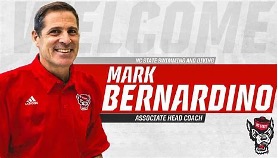
Photo Courtesy:
The initial roster release numbers were 30 and 30. I hope the men’s number will not drop below 30. I am comfortable with 30 for the women and would encourage 35 as a better number.
NIL. I think swimmers will take advantage of it. The numbers thrown out for football and basketball players will not be there for swimmers. But there is opportunity and I think swimmers will position and brand themselves and profit from it.
Jeff Dugdale, director of swimming, Queens University
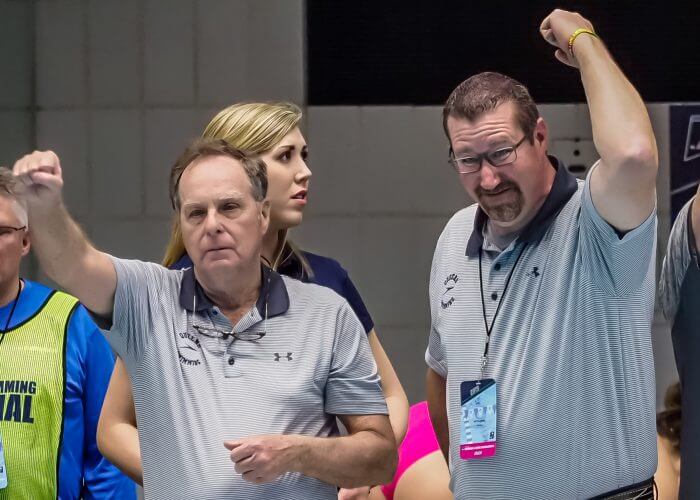
Photo Courtesy: Peter H. Bick
What will college swimming look like in five years? I believe swimming will exist. However, it will only thrive with the programs that have the capacity to raise lots of capital.
Will we have college swimming in ten years? In ten years it will be heavy on the female program side and again shift (regardless of size) towards those who have the capacity to endow, raise capital and leverage corporate sponsors.
Recruiting timetables. We need to get rid of recruiting trips and junior recruiting. People will visit the schools they wish to attend which helps with the yield and retention rates. This will also bring about parity as some may choose to stay home and help that program. With roster limits we can’t afford to take risks anymore. Recruiting and making an offer to a junior is a risk.
Roster size –I am fine with 30/30 as that is a good experience for all involved. Where it becomes an issue is for schools (mid majors) working on discount rates.
NIL (maybe not such a big deal in swimming) – all icing on the cake. Collectives become very important and Internationals have to be very careful about visas. There are two things yet to show its ugly head that will change the NIL yet again. One, if the IRS goes after a college athlete who does not pay taxes and the ramifications. Two, an international who gets in trouble and loses a visa for not following NIL rules.
Payment of athletes (House v. NCAA fallout) – I can’t explain it nor do I know why but I think in five years the House vs NCAA will be seen as a blessing not a curse. I believe that may have saved our sport, if possible, versus a slow death through lawsuit after lawsuit and programs getting picked off one by one because of the fallout. This has exposed and may cause the NCAA to settle which will help all focus.
Transfer portal. The transfer portal is part of a strategy but not the solution. Coaches have to now recruit juniors, seniors and current team. I believe that this will settle and a coach may have to ask deeper questions when recruiting to better their attrition rate.
Rachel Stratton-Mills, director of swimming and diving, Northwestern University
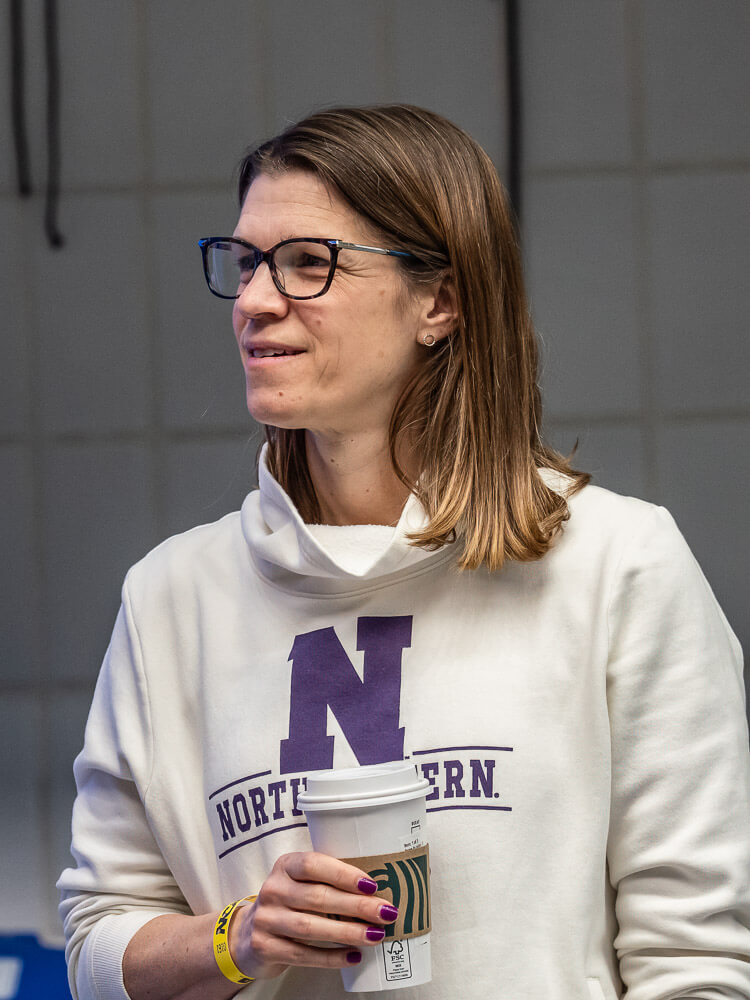
rachel-stratton-mills-
Recruiting timetables. When roster limits are imposed, we will see schools being much more selective to whom they offer spots. I see this increasing deadline decisions for some student-athletes, while others will have to wait longer to simply be offered a spot even if they have taken an official visit to that institution.
Roster size. This will be unique from institution to institution. While there could be nationwide roster limits set, there is no way currently to know if schools will even meet those limits. There is still a lot to be seen in this area.
NIL (maybe not such a big deal in swimming).
Transfer portal As roster limits are imposed, there will be a wave of athletes who are released from rosters. We will see quite a lot in the transfer portal looking for schools that have remaining spots for the following year. Unfortunately, there will be some athletes who are not able to find another team and we will see some lost opportunities for athletes in the coming years.
More frequent decommitments. I worry not just about more decommitments from athletes, but from some coaches. Most notably coaches not honoring the verbal commitments at signing date, because they don’t have an open ended number of positions to fill.
Several Division III Perspectives
Jon Howell, Emory University
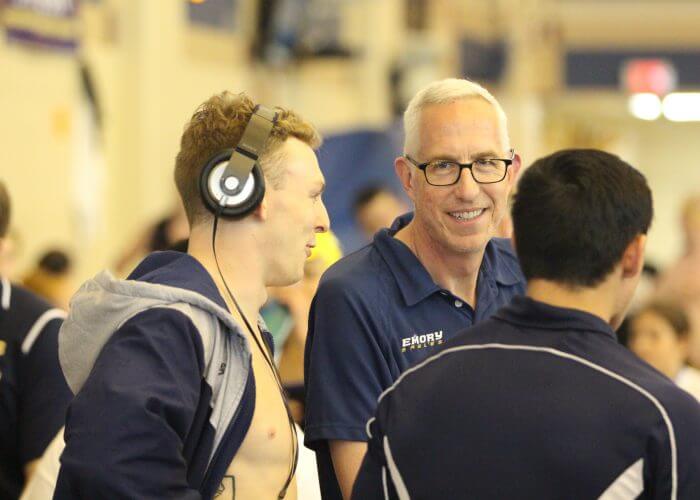
Photo Courtesy: Emory Athletics
The impact I’ve seen this year is mainly in recruiting, i.e.:
- Some seniors who committed to D-I schools junior year are now scrambling trying to find another spot. There are just not a lot of D-I options out there. That will continue.
- Student-athletes who were cut before school started have reached out to us. They want to continue in the sport and are exploring transfer options.
- Some college coaches are preferring to scale back on recruits rather than cutting current team members.
With fewer available D-I opportunities there are those beginning to realize they may have to look beyond D-I if they really want to swim in college. D-III offers good competitive options, as does D-II. This interest has expanded and is only going to grow. This is just the tip of the iceberg.
While D-I issues are not D-III issues, all divisions in swimming are connected. Whatever happens to D-I will have some impact on D-III and certainly USA Swimming club swimming as well. I feel like nobody really knows what is going to happen. Everyone is on pins and needles because they don’t want to lose competitive advantage.
At the end of the day it is going to become a money issue.
Another coach (name withheld upon request)
Many coaches rue the trend to earlier and earlier contacts. For many, their preference is to work with juniors and seniors during the college search process helping them get a better sense of who they are and what they want. Coaches agree that high school athletes still have a lot to learn, but are more ready to do so – and seem less likely to be seduced by what one coach calls “bright and shiny things.”
Most all feel that roster restrictions will not be good for swimming in general with talented athletes perhaps opting for guaranteed spots on mid major or D-II or D-III teams. One result might be faster swimming in those locales. Another may be athletes leaving swimming to attend bigger schools. Or — a worst case scenario — kids getting recruited to a school and then getting cut because the school has recruited someone better.
While NIL has been absorbed into the NCAA way of life the territory remains uncharted. The current lack of limits raises the question as to whether it is even possible to have reasonable or enforceable limits.
Can coaches and colleges continue to offer meaningful collegiate swimming experiences for all kinds of swimmers at various institutions? They hope so. Anything that reduces aquatic participation is seen as opportunity lost.
One coach believes D-III schools have the correct model in that it looks at athletics as not as a moneymaking (or losing) enterprise but as education and enhancing the student experience. He equates money “lost” on athletics as the same as that “lost” employing professors and equipping labs.



